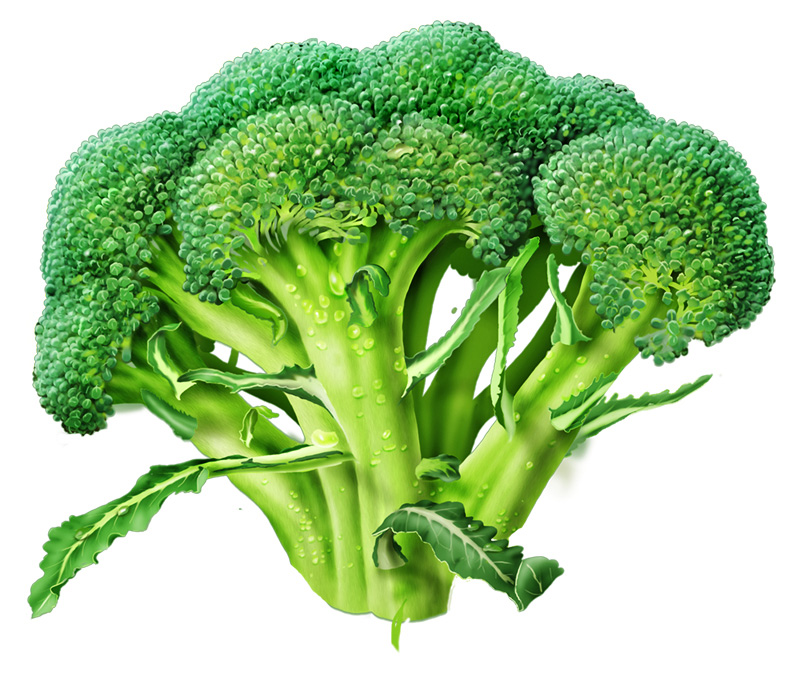 Begin by cutting broccoli florets into quarters and let sit for several minutes before cooking to enhance its health-promoting benefits. Steam for 5 minutes. You’ll want to include broccoli as one of the cruciferous vegetables you eat on a regular basis if you want to receive the fantastic health benefits provided by the cruciferous vegetable family. At a minimum, include cruciferous vegetables as part of your diet 2-3 times per week, and make the serving size at least 1-1/2 cups. Even better from a health standpoint, enjoy broccoli and other vegetables from the cruciferous vegetable group 4-5 times per week, and increase your serving size to 2 cups.
Begin by cutting broccoli florets into quarters and let sit for several minutes before cooking to enhance its health-promoting benefits. Steam for 5 minutes. You’ll want to include broccoli as one of the cruciferous vegetables you eat on a regular basis if you want to receive the fantastic health benefits provided by the cruciferous vegetable family. At a minimum, include cruciferous vegetables as part of your diet 2-3 times per week, and make the serving size at least 1-1/2 cups. Even better from a health standpoint, enjoy broccoli and other vegetables from the cruciferous vegetable group 4-5 times per week, and increase your serving size to 2 cups.
It’s no coincidence that more than 300 research studies on broccoli have converged in one unique area of health science, the development of cancer, and its relationship to three metabolic problems in the body. Those three problems are (1) chronic inflammation (2) oxidative stress, and (3) inadequate detoxification. While these types of problems have yet to become part of the public health spotlight, it is essential to understanding broccoli’s unique health benefits. Over the past 5 years, research has made it clear that our risk of cancer in several different organ systems is related to the combination of these three problems. Exposure to potentially toxic substances in our food and water, or in the air we breathe both indoors and outdoors, exposure to allergy-triggering substances, poor general health, dietary deficiencies, use of prescription and over-the-counter medications, and other lifestyle practices can result in a level of danger to our bodies that prompts our inflammatory system to work in overdrive on a 24/7 basis. Researchers often refer to this phenomenon as “chronic inflammation.” Often contributing to this level of danger is weakened detox ability in our body. If our liver, skin, and other organ systems cannot keep up with and detoxify the number of potential toxins that we encounter, too many potential toxins remain at large throughout our body. Once again, the result is a level of risk that prompts chronic inflammation.
On a more temporary, short-term basis, inflammation is part of good health. Whether physical or chemical in nature, whenever our body detects a wound, it typically responds by trying to heal with an inflammatory response. When our bodies are overwhelmed day in and day out with chronic inflammation, many other metabolic balances can get thrown out, including the balance in our oxygen metabolism. An unwanted imbalance starts to occur in which too many overly reactive, oxygen-containing molecules are formed. This condition is called oxidative stress. The increased presence of these overly reactive molecules can do damage to many parts of our cells, including their genetic material (and especially their deoxyribonucleic acid, or DNA). Over time, the constant and cumulative DNA damage inside our cells can pose a major risk factor for conversion of healthy cells into cancerous ones.
It’s equally possible for this sequence of events to start not with chronic, excessive inflammation, but with chronic oxidative stress. Over time, when overly reactive oxygen-containing molecules cause damage to DNA and other cell structures, our body reads this situation as being highly dangerous and it initiates an inflammatory response to try and reduce the threat posed by the oxidative stress. In either case, we end up with a combination of inadequate detoxification of toxic substances, chronic inflammation and oxidative stress that puts us at greater risk for developing cancer.
The nutrients found in broccoli are able to change this set of connections between inflammation, oxidative stress, detox and cancer. In fact, it would be fair to describe broccoli as containing anti-inflammatory nutrients, antioxidant nutrients, detox-support nutrients, and anti-cancer nutrients as well!
When threatened with dangerous levels of potential toxins, or dangerous numbers of overly-reactive, oxygen-containing molecules, signals are sent within our body to our inflammatory system, directing it to help protect our body from potential damage. One key signaling device is a molecule called Nf-kappaB. When faced with the type of dangers described above, the NF-kappaB signaling system is used to “rev up” our inflammatory response and increase production of inflammatory components. This process works beautifully in temporary, short-term circumstances when healing from injury is required. When it continues indefinitely at a constant pace, however, it can put us at risk for serious health problems, including the development of cancer
Dr. Tonifelix C. Manu
(PHYTOTHERAPIST)
